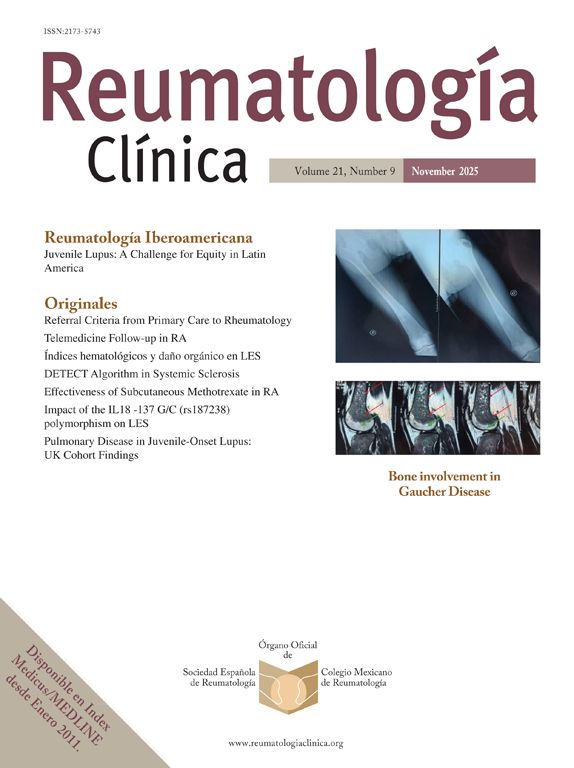Rowell’s syndrome (RS) is an unusual form of subacute cutaneous lupus. We present the case of a male patient with chronic RS who exhibits a remarkable response to anifrolumab.
El síndrome de Rowell es una forma inusual de lupus cutáneo subagudo. Se presenta el caso de un varón con SR de curso crónico que presenta espectacular respuesta con anifrolumab.
The Rowell syndrome is a rare form of skin involvement characterised by erythema multiforme lesions in the context of systemic lupus erythematosus,1 which often responds favourably to the usual treatment regimen for this condition.2
Clinical observationWe present the case of a 78-year-old man who came to our unit after 24 years of erratic follow-up by Dermatology and Rheumatology at another centre, with a previous diagnosis of Rowell’s syndrome in the context of systemic lupus erythematosus, with haematological involvement (an episode of thrombotic thrombocytopenic purpura 9 years before). Other antecedents included autoimmune hypothyroidism and suspicion of autoimmune hepatitis vs. primary HBV infection (histological study was not available due to the patient's refusal). As for the dermatological history, from the onset of the disease he had never achieved complete remission of the lesions, despite having received chronic treatment with prednisone (usual dose 10 mg/day), methotrexate (dose and route of administration unknown), azathioprine (50 mg/day), chloroquine (155 mg/day), quinacrine (dose unknown) and hydroxychloroquine (the latter, he continued to take: following our assessment, 200 mg/day). He partially improved on a full course of rituximab (2 doses of 1 g administered at a two-week interval) in the context of thrombotic thrombocytopenic purpura.
Over the previous 4 months there had been a marked worsening of the skin symptoms with generalised erythematous and scaly plaques, predominantly on the trunk, arms, cervical region and groin (Fig. 1), with no mucosal involvement. There were no systemic symptoms. At the centre where he had been monitored previously, his systemic corticosteroid treatment had been intensified, with partial improvement, however he had relapsed when prednisone was reduced to below 25−30 mg/day.
Given the long course of the condition, the refractoriness to several lines of treatment and the high cumulative dose of corticosteroids, it was decided not to intensify corticosteroid treatment (prednisone dose: 12.5 mg/day) and to start treatment with anifrolumab. Since the patient was an asymptomatic HBV carrier, antiviral treatment was started with entecavir (0.5 mg/day), which was maintained while he received anifrolumab treatment, without any reactivation occurring. One week after the first infusion there was a 90% clearance of lesions (Figs. 2 and 3), with complete resolution after the second dose. This improvement has been maintained up to the present, and systemic corticosteroid therapy has been discontinued.
DiscussionThe literature reports on the use of anifrolumab in only 2 cases of Rowell’s syndrome, both with favourable results.3,4
These are 2 cases of female patients with a first acute course of Rowell’s syndrome. Both had required high doses of corticosteroids (>1 mg/kg per day) and were failing several different lines of treatment (mycophenolate mofetil, azathioprine, rituximab, belimumab). In one case, remission was achieved with immunoglobulins,3 and in the other, with systemic corticosteroids. This improvement was consolidated by starting anifrolumab.4
The case presented here is unique and particularly relevant as it is the first published case of chronic, cortico-dependent Rowell syndrome, refractory to several lines of treatment, in which remission of the skin symptoms was induced in the first week with anifrolumab, thus enabling definitive discontinuation of corticosteroids.
ConclusionAnifrolumab demonstrated effectiveness and rapidity of action in this case and could be an effective therapeutic option for chronic and refractory cases of Rowell's syndrome.









